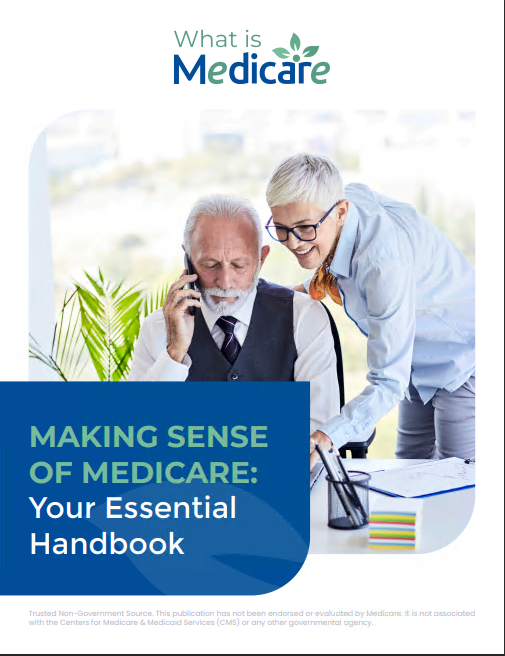Key Takeaways
-
Medicare is not free and includes a wide range of costs, including premiums, deductibles, and coinsurance that continue throughout retirement.
-
The real financial impact of Medicare depends on how and when you enroll, whether you delay Part B, and how your plan coordinates with prescription drug coverage and supplemental insurance.
Medicare Was Never Truly Free
You may have been led to believe that once you qualify for Medicare, your healthcare costs will drop dramatically or even disappear. But that’s not how it works. While Medicare helps reduce the financial burden of healthcare in retirement, it still comes with costs that can add up quickly if you’re not prepared.
Medicare has multiple parts, and each one carries its own cost structure. Even if you worked for decades and paid Medicare taxes, you will still need to pay monthly premiums, deductibles, and out-of-pocket expenses in most cases.
What You Pay for Medicare in 2025
Let’s break down the general costs associated with Medicare in 2025:
Part A (Hospital Insurance)
-
Premium: Free for most people with at least 40 quarters of Medicare-covered employment. If you worked less, you may pay up to $518 per month.
-
Deductible: $1,676 per benefit period.
-
Coinsurance: $419 per day (days 61–90), $838 per day for lifetime reserve days.
Part B (Medical Insurance)
-
Premium: $185 per month for most enrollees in 2025.
-
Deductible: $257 annually.
-
Coinsurance: 20% of Medicare-approved services after the deductible.
Part D (Prescription Drug Coverage)
-
Deductible: Up to $590 depending on your plan.
-
Out-of-pocket cap: $2,000 annually for prescription drugs, thanks to recent legislative changes.
These figures don’t even account for late enrollment penalties or IRMAA surcharges (Income-Related Monthly Adjustment Amounts) if your income is above a certain level.
Why Medicare Costs Feel So Surprising
Many retirees are caught off guard when they realize that Medicare doesn’t cover 100% of their medical expenses. The misconception often comes from comparing Medicare to employer coverage, which typically offers fixed copays and predictable out-of-pocket limits.
With Medicare:
-
You typically don’t get fixed copays unless you’re in a private plan.
-
There is no cap on out-of-pocket costs under Original Medicare alone.
-
Most services under Part B come with 20% coinsurance, with no upper limit.
Budgeting for the Real Numbers
Even with all the base costs outlined, you’ll likely need to consider additional expenses that affect your monthly and annual healthcare budget:
-
Medigap or supplemental insurance: Helps cover gaps in Original Medicare but comes with an extra monthly premium.
-
Medicare Advantage plans: May offer alternative cost structures but often include network restrictions and prior authorization rules.
-
Dental, vision, and hearing care: Not covered under Original Medicare, requiring separate insurance or out-of-pocket payment.
-
Long-term care: Medicare does not cover custodial care or assisted living expenses.
All of these can push your healthcare costs well beyond your expectations, especially in your 70s and 80s.
Medicare Costs Change as You Age
Your costs won’t stay fixed year to year. Premiums, deductibles, and coinsurance amounts typically increase annually. Additionally, your healthcare usage tends to rise with age, especially as chronic conditions emerge or worsen.
For example, between the ages of 65 and 75, your average Medicare-related spending may feel manageable. But as you approach your late 70s and early 80s, hospital stays, specialist visits, and prescription drugs often become more frequent, leading to higher out-of-pocket costs.
Late Enrollment Can Cost You
If you miss your Initial Enrollment Period (IEP), you may be penalized with lifelong surcharges:
-
Part B Late Enrollment Penalty: 10% for each 12-month period you delayed.
-
Part D Late Enrollment Penalty: 1% of the national base premium for each month you were without creditable coverage.
These penalties don’t go away. They stay with you as long as you have coverage, increasing your monthly costs permanently.
Medicare Advantage vs. Original Medicare: The Cost Trade-Off
Many people turn to Medicare Advantage for cost predictability. These plans often advertise lower premiums and extra benefits, but:
-
You may have higher out-of-pocket costs for hospital stays, diagnostic imaging, or out-of-network care.
-
Prior authorizations can delay or restrict access to services.
-
You often need to stay within a specific provider network.
Original Medicare with a Medigap policy gives you more freedom but usually comes with higher premiums. Choosing the wrong plan for your health needs or location can lead to greater out-of-pocket expenses over time.
Prescription Drugs: The $2,000 Cap Isn’t the End of the Story
Yes, Medicare Part D now limits annual out-of-pocket costs for prescriptions to $2,000. But that doesn’t mean prescription costs are now easy to manage.
-
You may reach the $2,000 cap quickly if you take brand-name or specialty drugs.
-
Plans can change their formularies every year, meaning a drug you need today may not be covered next year.
-
You still need to pay your premiums and meet deductibles before cost-sharing begins.
Dental, Vision, and Hearing: Still Not Included
Many retirees assume Medicare covers routine dental checkups, glasses, or hearing aids. It doesn’t.
You’ll need separate coverage or savings to pay for:
-
Routine dental care like cleanings, fillings, and extractions
-
Hearing exams and hearing aids
-
Eye exams, prescription lenses, and frames
Some Medicare Advantage plans may offer these benefits, but they often come with limits and restrictions.
Travel and Medicare Don’t Always Mix
If you plan to travel in retirement or split time between states, your Medicare coverage may not go with you seamlessly.
-
Original Medicare is accepted nationwide by any provider who takes Medicare.
-
Some private plans only cover emergencies out-of-network or limit service areas to specific regions.
-
If you live abroad, Medicare won’t cover care outside the U.S., so you’ll need international travel insurance.
This matters more than people think, especially for snowbirds or retirees who relocate seasonally.
IRMAA Surcharges: The Hidden Income-Linked Penalty
If your modified adjusted gross income (MAGI) from two years ago is above a certain threshold, you’ll pay more for both Part B and Part D.
In 2025, the IRMAA threshold starts at $106,000 for individuals and $212,000 for joint filers. The higher your income, the more you’ll pay, regardless of your actual healthcare usage.
This affects not just wealthy retirees, but also those with one-time income events like:
-
Selling a house
-
Taking large retirement account withdrawals
-
Receiving delayed Social Security lump sums
Planning Ahead Matters More Than Ever
The earlier you plan for your Medicare costs, the more control you’ll have over your budget in retirement. Start by:
-
Reviewing your options during each Open Enrollment period (October 15 to December 7)
-
Comparing plan structures and out-of-pocket costs
-
Considering Medigap or Medicare Advantage trade-offs
-
Keeping your income within thresholds to avoid IRMAA
What This Means for Your Retirement Budget
Healthcare may become one of your biggest monthly expenses in retirement, rivaling housing and food. Your Medicare costs won’t stay static and could rise with every year you age.
You must:
-
Track premiums, deductibles, and coinsurance annually
-
Evaluate prescription drug coverage changes
-
Account for dental, vision, and hearing separately
-
Anticipate higher healthcare usage as you get older
Without this level of awareness, it’s easy to underestimate how much you’ll need to cover basic medical care.
Understanding Medicare Costs Now Can Save You Later
It’s not too late to get a clear picture of what Medicare actually covers and what it doesn’t. Knowing the real numbers helps you:
-
Avoid penalties
-
Prevent surprise bills
-
Prepare for rising costs over time
Don’t rely on assumptions or outdated advice. Review your Annual Notice of Change (ANOC) every fall, compare available plans carefully, and speak with a licensed agent listed on this website for tailored help.






